“It’s a matter of survival,” says Roman Slaston, director of the Ukrainian Agribusiness Club (UCAB), on the farmers trapped in Russian-occupied areas of Ukraine.
“They’re in a very bad situation. The activities of battle and missiles are much higher on those farms. Even in not occupied areas near the frontline, there is a high risk [to] life for farmers. They’re not able to farm properly,” he said.
One such farmer in occupied Ukraine, Andrij Pastuchenko, who had been farming 20km from Kherson city, spoke to the Irish Farmers Journal a number of times in 2022. Since last August, he has been uncontactable and his whereabouts and the status of his farm are unknown.
Speaking from Ukraine, Slaston described how roughly 75% of the farms in Kherson, 65% in Donetsk, 95% in Luhansk and 80% in Zaporizhzhia are occupied by Russian forces.
He said these farmers are “farming under pressure”, have “no security of human or property rights” and are being forced to accept low Russian prices for their produce, if paid at all.
“They are forced to register to Russian laws and taxes and work under their rules. The Russian authorities come and take their machinery and grain from their silos. They take what was ours and it is ours no longer.
“Some farmers have left their farms and have moved to central or western Ukraine. Some stayed but their farms are no longer operational.”
The farmers in Russian-occupied areas face an impossible decision – cut losses and escape to free Ukraine or batten down, try keep their land and co-operate with their invader.

Russia invaded Ukraine on 24 February 2022. One year on, Ukrainian farmers continue to face the impact.
This latter approach is leading to accusations and judgment from those the other side of the enemy line, suggested tillage and dairy farmer Kees Huizinga from his farm in Kischenzi.
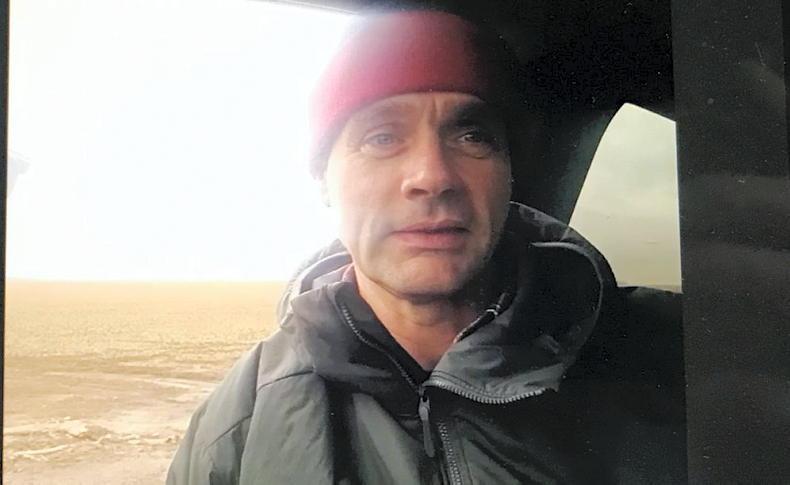
Tillage and dairy farmer Kees Huizinga farms in Kischenzi.
“It’s a difficult decision facing these guys. If they co-operate with the Russians, they can be blamed for conceding to the enemy. They don’t want to, but they might have to [in order] to survive.”
Huizinga and Slaston both described the impact of the year-long war on the wider farm sector across Ukraine, including in areas far from Russia’s continuing onslaught.
On 22 July 2022, the United Nations brokered the Black Sea Grain Initiative, an agreement between Russia and Ukraine, aided by Turkey.
The deal enabled the export of Ukrainian grain from the three Ukrainian ports of Odessa, Chornomorsk and Yuzhne.
“After starting the grain initiative, the situation improved a bit. Now, roughly we are exporting 3m tonnes of grain a month through the three ports and another 3.5m tonnes through rail and other logistics,” said Slaston.

Ukraine farmer and director general of the Ukrainian Agribusiness Club (UCAB) Roman Slaston.
Ukraine exported approximately 60m tonnes of grain in 2021 through eight sea ports, three times the 18-20m tonnes that officials predict will be exported in 2023.
As part of the Black Sea deal, Russian authorities inspect all grain shipments in Istanbul.
“The Russians are doing everything they can to sabotage these inspections.
“Now they’re doing an average of two to three inspections per day. In September/October there were days when they were doing 11 inspections per day.
“Now we have big queues with 100 vessels waiting for inspection. They each have 30,000t to 70,000t on board and it’s costing them $30,000 to $50,000 (€30,000 to €45,000) per day to wait,” said Slaston.
The Ukrainian farm leader claimed that the grain backlog and associated exporter costs affect the prices paid to farmers, with farmgate prices at
$110-$150/t (€100-€140/t)) at present.
“That’s below the cost of production at the moment for this year and last year. It creates a big question for farmers.”
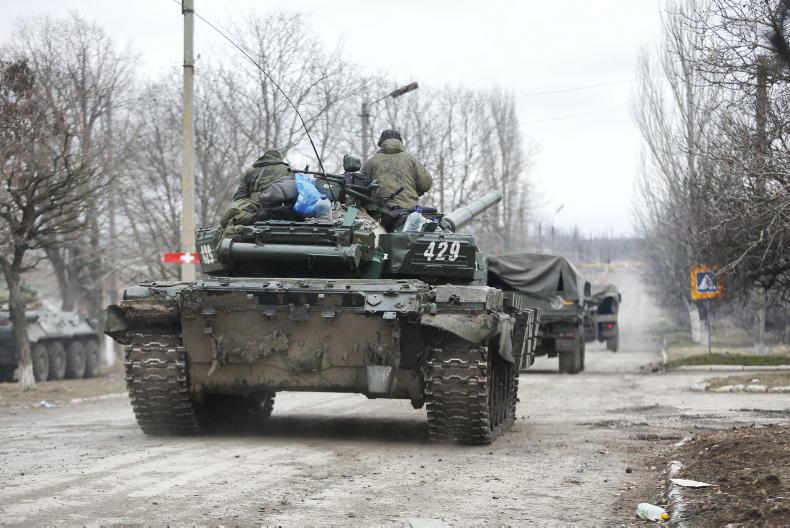
Farmers in occupied Ukraine have no human or property rights, says the Ukrainian Agribusiness Club (UCAB).
Slaston described how many farmers have been forced to diversify into sunflower and soyabean production due to the “forced logistics and [grain] unprofitability” created by the war.
In 2023, the Ukrainian Agribusiness Club (UCAB) estimates that farmers will sow 22% less land with grain and that this will be replaced with oilseeds.
“Yield will also be down. Application of fertiliser will decrease 60% to only 40% of what was applied in 2021.”
Milk
Domestic demand for Ukrainian dairy products has fallen 25% since the start of the war, due to a large number of women and children leaving the country. That said, milk prices have remained more or less stable, albeit much lower than those seen elsewhere in Europe. This has been down to a move to process and export more dried milk products, UCAB says.
Farmers are receiving up to 35c/l at present. Due to the price stability, farmer Kees Huizinga says he is building new sheds and expanding his dairy herd. “Milk price has gone up a little bit but it’s not extreme.” However, unlike tillage, he said dairy provides a stable income year-round.
“For beef, prices are very low at present. Our internal market for beef dropped dramatically, especially for premium cuts. Exports dropped significantly too,” said Slaston.
Cull cow liveweight prices are currently at €1.20/kg, with steer and heifer prices a bit higher.

Farmers and their communities are still jarring their beef and pigmeat to supply to the army when required.
Huizinga explained that despite the destruction of some of the country’s largest pig farms in Russian-occupied areas, pigmeat is outpacing beef supply at present.
When the war first started, farmers and their communities were butchering and jarring their own pigmeat and beef to send as food to their Ukrainian soldiers.
“The army has improved with the support of the west. They are now bringing in their own food and the supply chain has improved but communities still provide some food if it’s needed,” he said.

Many farmers in occupied areas of Ukraine have had their livestock killed or injured by Russian weapons.
Farm labour shortages also caused issues at the start of the war as recruits were drafted for the Ukrainian army.
“It’s still the case and a new army mobilisation phase is coming up,” said Slaston.
“It also depends on how much you help the army with money, trucks and tractors. The more you support the army in that way, the less people you have to provide.”
Early in the war, Russian soldiers moved to steal farm machinery with GPS transmitters showing Ukrainian farmer’s combines parked up on Russian farms, across the border.
“Theft is still happening in areas close to the frontline. Now the Russians are smarter and they take off the GPS before they take the tractors to Russia,” said Slaston.
Ukrainian farmers are currently paying €700/t for urea.
There are two factories in the country manufacturing fertiliser at present but they are “not keen to lower prices unfortunately”, says Slaston, who criticised the exportation of Ukrainian fertiliser to Romania when it is needed for domestic use.
“Farmers are minimising risk and buying less fertiliser,” said Huizinga.
Outlook
‘Definitely, we will survive, but I see 2023 as a harder year than last’
Despite the significant challenges facing Ukrainian agriculture at present, both farmers remain hopeful for the sector’s survival.
“You see more and more that farms are being sold. The guys with good reserves and who have diversified will survive. Those who have not will be in trouble,” said Huizinga. “There’s a lot of elderly farmers and it’s a real challenge for them. Many have a wife and children who have left the country and that makes it difficult. The next generation are not all directly interested in farming and the next few years will tell a lot.
“In the biggest parts of the country, away from the frontline, there are no real risks now. In the small villages, there’s no real risk of being hit by a rocket. The Russians can’t do those waves of attack any more.
“In the beginning we had panic and anxiety [about] what’s going to happen. Farmers are practical people and after a while, you get an idea of how these weapons work.”
Slaston added: “Definitely, we will survive, but I see 2023 as a harder year than last. We don’t know what will happen next and there is a lot of uncertainty.”
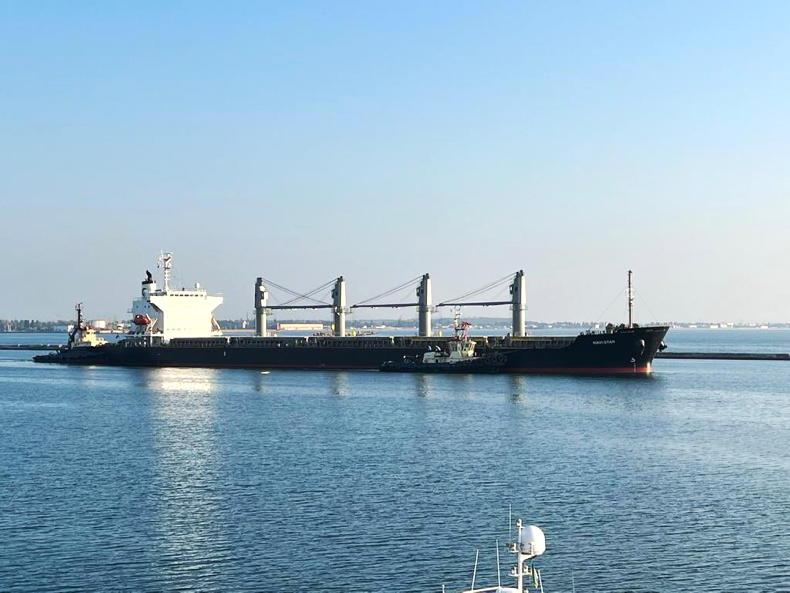
The Black Sea Grain Initiative must continue, say Ukrainian farmers. \ Turkish ministry of defence
Read more
Russia forcing Ukrainian farmers to pay taxes to Kremlin
Plans afoot to de-mine Ukrainian farms
War costs Ukraine's farm sector €34bn over seven months
Farming in war: cattle sheds bombed and combines stolen
“It’s a matter of survival,” says Roman Slaston, director of the Ukrainian Agribusiness Club (UCAB), on the farmers trapped in Russian-occupied areas of Ukraine.
“They’re in a very bad situation. The activities of battle and missiles are much higher on those farms. Even in not occupied areas near the frontline, there is a high risk [to] life for farmers. They’re not able to farm properly,” he said.
One such farmer in occupied Ukraine, Andrij Pastuchenko, who had been farming 20km from Kherson city, spoke to the Irish Farmers Journal a number of times in 2022. Since last August, he has been uncontactable and his whereabouts and the status of his farm are unknown.
Speaking from Ukraine, Slaston described how roughly 75% of the farms in Kherson, 65% in Donetsk, 95% in Luhansk and 80% in Zaporizhzhia are occupied by Russian forces.
He said these farmers are “farming under pressure”, have “no security of human or property rights” and are being forced to accept low Russian prices for their produce, if paid at all.
“They are forced to register to Russian laws and taxes and work under their rules. The Russian authorities come and take their machinery and grain from their silos. They take what was ours and it is ours no longer.
“Some farmers have left their farms and have moved to central or western Ukraine. Some stayed but their farms are no longer operational.”
The farmers in Russian-occupied areas face an impossible decision – cut losses and escape to free Ukraine or batten down, try keep their land and co-operate with their invader.

Russia invaded Ukraine on 24 February 2022. One year on, Ukrainian farmers continue to face the impact.
This latter approach is leading to accusations and judgment from those the other side of the enemy line, suggested tillage and dairy farmer Kees Huizinga from his farm in Kischenzi.

Tillage and dairy farmer Kees Huizinga farms in Kischenzi.
“It’s a difficult decision facing these guys. If they co-operate with the Russians, they can be blamed for conceding to the enemy. They don’t want to, but they might have to [in order] to survive.”
Huizinga and Slaston both described the impact of the year-long war on the wider farm sector across Ukraine, including in areas far from Russia’s continuing onslaught.
On 22 July 2022, the United Nations brokered the Black Sea Grain Initiative, an agreement between Russia and Ukraine, aided by Turkey.
The deal enabled the export of Ukrainian grain from the three Ukrainian ports of Odessa, Chornomorsk and Yuzhne.
“After starting the grain initiative, the situation improved a bit. Now, roughly we are exporting 3m tonnes of grain a month through the three ports and another 3.5m tonnes through rail and other logistics,” said Slaston.

Ukraine farmer and director general of the Ukrainian Agribusiness Club (UCAB) Roman Slaston.
Ukraine exported approximately 60m tonnes of grain in 2021 through eight sea ports, three times the 18-20m tonnes that officials predict will be exported in 2023.
As part of the Black Sea deal, Russian authorities inspect all grain shipments in Istanbul.
“The Russians are doing everything they can to sabotage these inspections.
“Now they’re doing an average of two to three inspections per day. In September/October there were days when they were doing 11 inspections per day.
“Now we have big queues with 100 vessels waiting for inspection. They each have 30,000t to 70,000t on board and it’s costing them $30,000 to $50,000 (€30,000 to €45,000) per day to wait,” said Slaston.
The Ukrainian farm leader claimed that the grain backlog and associated exporter costs affect the prices paid to farmers, with farmgate prices at
$110-$150/t (€100-€140/t)) at present.
“That’s below the cost of production at the moment for this year and last year. It creates a big question for farmers.”

Farmers in occupied Ukraine have no human or property rights, says the Ukrainian Agribusiness Club (UCAB).
Slaston described how many farmers have been forced to diversify into sunflower and soyabean production due to the “forced logistics and [grain] unprofitability” created by the war.
In 2023, the Ukrainian Agribusiness Club (UCAB) estimates that farmers will sow 22% less land with grain and that this will be replaced with oilseeds.
“Yield will also be down. Application of fertiliser will decrease 60% to only 40% of what was applied in 2021.”
Milk
Domestic demand for Ukrainian dairy products has fallen 25% since the start of the war, due to a large number of women and children leaving the country. That said, milk prices have remained more or less stable, albeit much lower than those seen elsewhere in Europe. This has been down to a move to process and export more dried milk products, UCAB says.
Farmers are receiving up to 35c/l at present. Due to the price stability, farmer Kees Huizinga says he is building new sheds and expanding his dairy herd. “Milk price has gone up a little bit but it’s not extreme.” However, unlike tillage, he said dairy provides a stable income year-round.
“For beef, prices are very low at present. Our internal market for beef dropped dramatically, especially for premium cuts. Exports dropped significantly too,” said Slaston.
Cull cow liveweight prices are currently at €1.20/kg, with steer and heifer prices a bit higher.

Farmers and their communities are still jarring their beef and pigmeat to supply to the army when required.
Huizinga explained that despite the destruction of some of the country’s largest pig farms in Russian-occupied areas, pigmeat is outpacing beef supply at present.
When the war first started, farmers and their communities were butchering and jarring their own pigmeat and beef to send as food to their Ukrainian soldiers.
“The army has improved with the support of the west. They are now bringing in their own food and the supply chain has improved but communities still provide some food if it’s needed,” he said.

Many farmers in occupied areas of Ukraine have had their livestock killed or injured by Russian weapons.
Farm labour shortages also caused issues at the start of the war as recruits were drafted for the Ukrainian army.
“It’s still the case and a new army mobilisation phase is coming up,” said Slaston.
“It also depends on how much you help the army with money, trucks and tractors. The more you support the army in that way, the less people you have to provide.”
Early in the war, Russian soldiers moved to steal farm machinery with GPS transmitters showing Ukrainian farmer’s combines parked up on Russian farms, across the border.
“Theft is still happening in areas close to the frontline. Now the Russians are smarter and they take off the GPS before they take the tractors to Russia,” said Slaston.
Ukrainian farmers are currently paying €700/t for urea.
There are two factories in the country manufacturing fertiliser at present but they are “not keen to lower prices unfortunately”, says Slaston, who criticised the exportation of Ukrainian fertiliser to Romania when it is needed for domestic use.
“Farmers are minimising risk and buying less fertiliser,” said Huizinga.
Outlook
‘Definitely, we will survive, but I see 2023 as a harder year than last’
Despite the significant challenges facing Ukrainian agriculture at present, both farmers remain hopeful for the sector’s survival.
“You see more and more that farms are being sold. The guys with good reserves and who have diversified will survive. Those who have not will be in trouble,” said Huizinga. “There’s a lot of elderly farmers and it’s a real challenge for them. Many have a wife and children who have left the country and that makes it difficult. The next generation are not all directly interested in farming and the next few years will tell a lot.
“In the biggest parts of the country, away from the frontline, there are no real risks now. In the small villages, there’s no real risk of being hit by a rocket. The Russians can’t do those waves of attack any more.
“In the beginning we had panic and anxiety [about] what’s going to happen. Farmers are practical people and after a while, you get an idea of how these weapons work.”
Slaston added: “Definitely, we will survive, but I see 2023 as a harder year than last. We don’t know what will happen next and there is a lot of uncertainty.”

The Black Sea Grain Initiative must continue, say Ukrainian farmers. \ Turkish ministry of defence
Read more
Russia forcing Ukrainian farmers to pay taxes to Kremlin
Plans afoot to de-mine Ukrainian farms
War costs Ukraine's farm sector €34bn over seven months
Farming in war: cattle sheds bombed and combines stolen












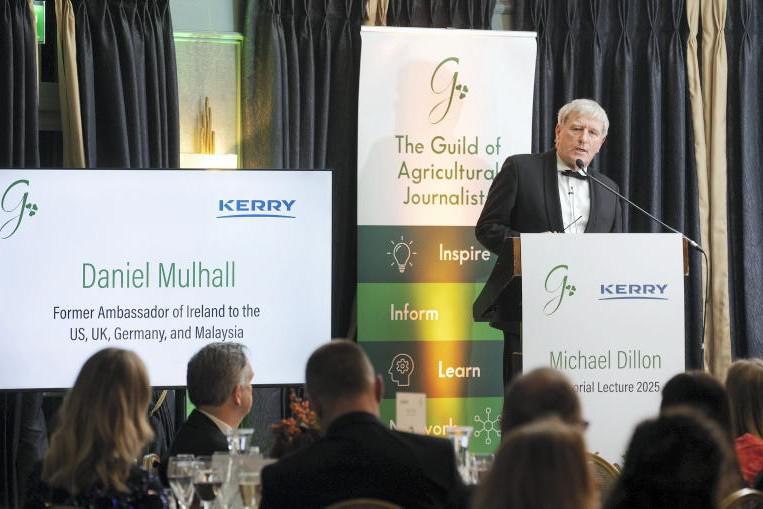


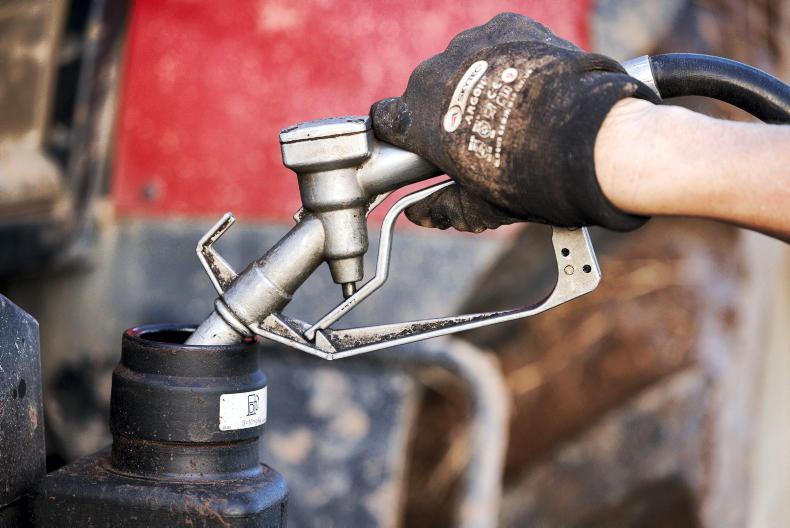
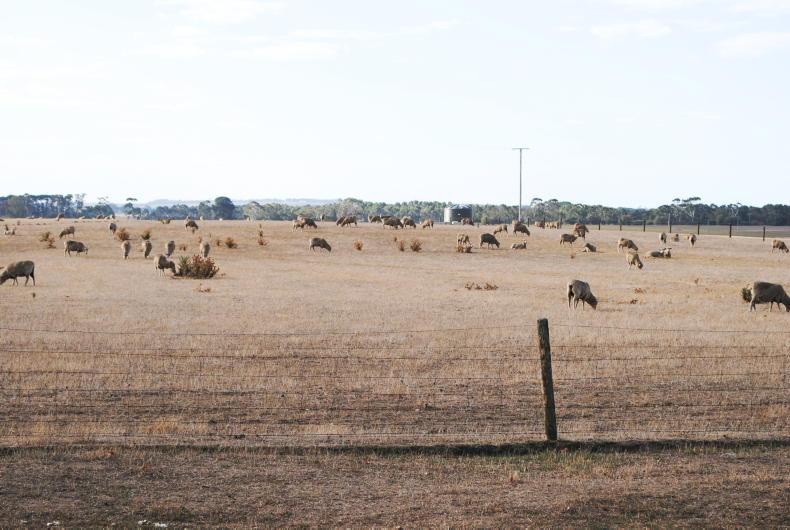
SHARING OPTIONS